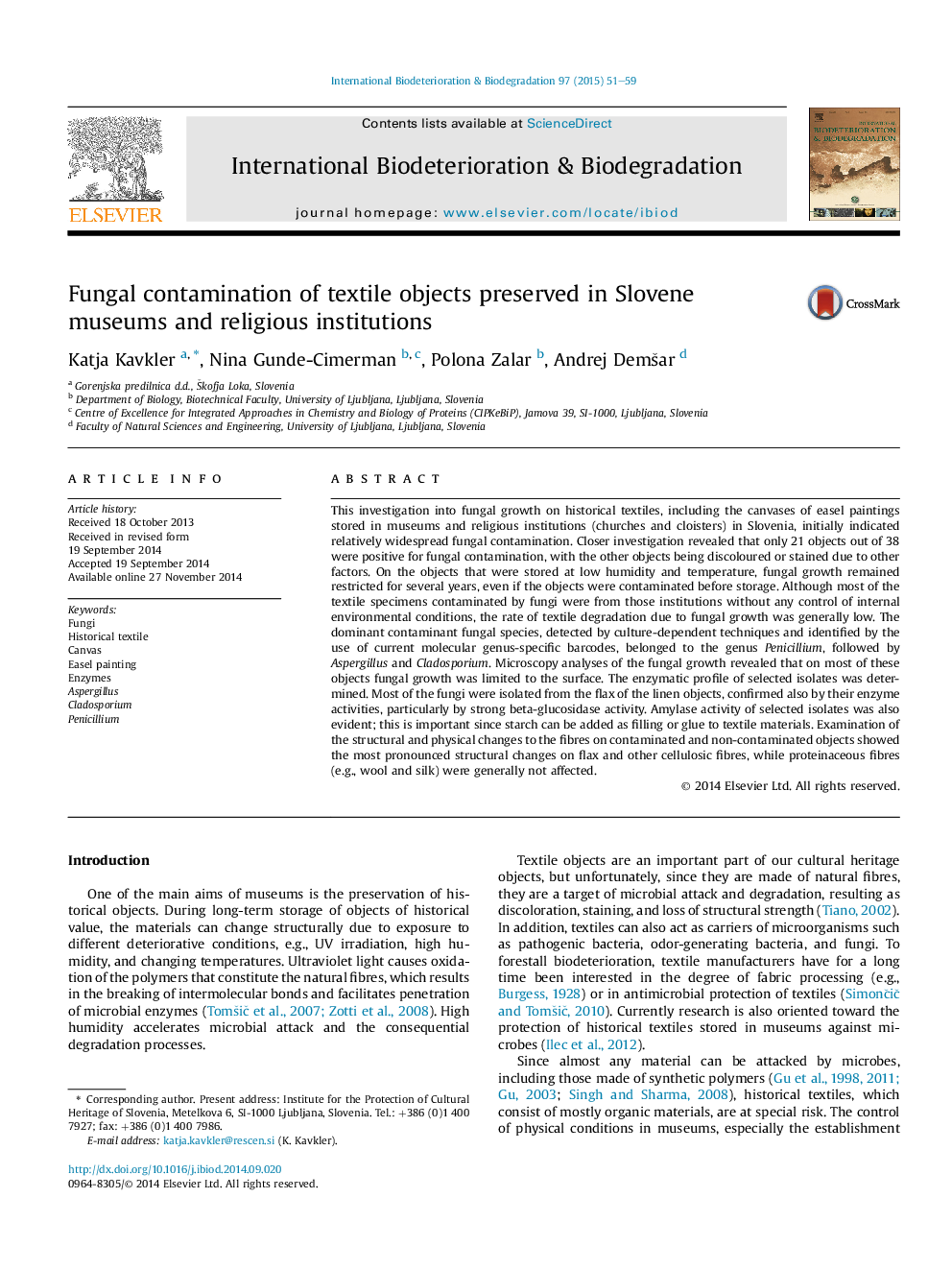| کد مقاله | کد نشریه | سال انتشار | مقاله انگلیسی | نسخه تمام متن |
|---|---|---|---|---|
| 4364666 | 1616320 | 2015 | 9 صفحه PDF | دانلود رایگان |
• Cellulose fibres are more susceptible to fungal degradation than proteinaceous fibres.
• Maintenance of recommended environmental conditions in museums is crucial.
• Maintenance of recommended conditions cannot prevent the growth of xerophilic fungi.
• Common airborne fungal genera might represent threat to stored textiles.
This investigation into fungal growth on historical textiles, including the canvases of easel paintings stored in museums and religious institutions (churches and cloisters) in Slovenia, initially indicated relatively widespread fungal contamination. Closer investigation revealed that only 21 objects out of 38 were positive for fungal contamination, with the other objects being discoloured or stained due to other factors. On the objects that were stored at low humidity and temperature, fungal growth remained restricted for several years, even if the objects were contaminated before storage. Although most of the textile specimens contaminated by fungi were from those institutions without any control of internal environmental conditions, the rate of textile degradation due to fungal growth was generally low. The dominant contaminant fungal species, detected by culture-dependent techniques and identified by the use of current molecular genus-specific barcodes, belonged to the genus Penicillium, followed by Aspergillus and Cladosporium. Microscopy analyses of the fungal growth revealed that on most of these objects fungal growth was limited to the surface. The enzymatic profile of selected isolates was determined. Most of the fungi were isolated from the flax of the linen objects, confirmed also by their enzyme activities, particularly by strong beta-glucosidase activity. Amylase activity of selected isolates was also evident; this is important since starch can be added as filling or glue to textile materials. Examination of the structural and physical changes to the fibres on contaminated and non-contaminated objects showed the most pronounced structural changes on flax and other cellulosic fibres, while proteinaceous fibres (e.g., wool and silk) were generally not affected.
Journal: International Biodeterioration & Biodegradation - Volume 97, January–February 2015, Pages 51–59
